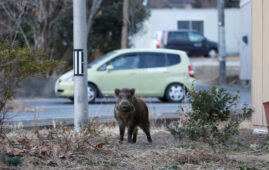



I keep writing about honeybees because in my long experience at the US Environmental Protection Agency, nothing affected me more than my discovery that the plight of the honeybees has been a result of industry malfeasance and corruption managed by the EPA. Suddenly, I could read the hidden script of modern archaeology excavating the complex codes of federal regulation, risk assessment, and environmental protection. Honeybees became the mirror of self-delusion and destruction.
It all started innocently. A few ecologists monitoring pesticides and their impact on honeybees raised the alarm as early as 1976. They wrote detailed memoranda on the hazardous and often lethal effects of neurotoxic farm insecticides on honeybees. They recommended a moratorium on such pesticides that crippled the abilities of honeybees to search for nectar and pollen and, at the same time, pollinate some of our crops.
However, by mid-1970s, America’s political class had had it with EPA, which in 1972 dared ban the king of farm sprays, DDT. So politicians tied the EPA to the profits of the industry. My colleagues’ recommendations went nowhere. EPA kept approving “bad actors,” deleterious pesticides, with far-reaching consequences not merely for honeybees but for all life.
This was astonishing to me. By the time I joined EPA, in 1979, the agency was imploding from industry corruption. With utter contempt for public and environmental health, the industry declared war on science and even the environmental laws it had drafted for the government. The agribusiness industry became the alternative model of government and society. It expected no resistance or change. EPA was simply its lapdog. But unexpected things happened.
In 1976, an outstanding pathologist from the US Food and Drug Administration, Adrian Gross, uncovered a massive lab fraud. Companies paid a large laboratory known as Industrial Bio-Test, near Chicago, to test their products for federal approval. IBT did just that, using fraud and deceit to make the products shine.
Gross reported the fraud he discovered and EPA, FDA, and the entire federal government and the industry panicked. Companies went to their paid lobbyists who went to the paid-for Congressmen and Senators who went to the White House that ordered EPA to minimize and ignore the lab crime and its potential deleterious effects on public and environmental health.
It took seven years, from 1976 to 1983, to shut down IBT. And none of the major pesticides that gained license through the flawless data generating IBT machine lost their “registration” with the EPA. In other words, the fraud and crime of approving pesticides with fake data was never punished. The owners of IBT pesticides did not go to prison.
This period of wild industry corruption gave birth to glyphosate, a weed killer that achieved global significance, being the biggest selling pesticide ever. From 1974, when it came to market, to 2014, more than 1.6 billion kilograms of glyphosate drenched America. This is a Monsanto product.
I don’t know if glyphosate was tested by IBT. But other researchers say glyphosate came out of the house of IBT. Whatever the truth, the result is probably the same: a cloud of suspicion and outright agribusiness fraud has tainted glyphosate.
This history and Monsanto’s fight for global dominance give glyphosate the attention of champions. It is the “active” ingredient of the popular roundup weed killer and the driver of Roundup Ready, genetically engineered crops designed to tolerate glyphosate. Monsanto claims the best, almost harmless virtues, for its precious glyphosate products. Most international organizations, governments, agricultural universities, and the agribusiness industry like Monsanto. Glyphosate continues to be the powerhouse of weed killers and GMOs – worldwide.


Carlos Rafael, a Massachusetts fishing tycoon.


This video of a large dolphin.


California officials aim to guard some.


Six years after the Fukushima Daichi.
Leave a Comment